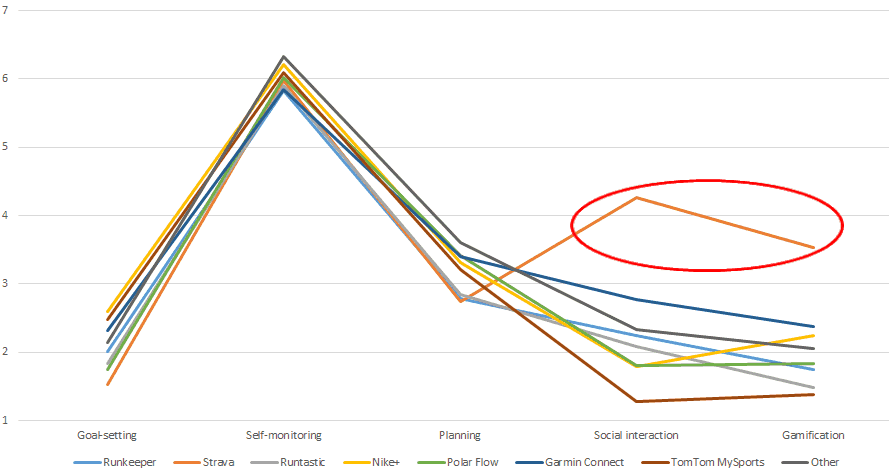I look at these platforms from the perspective of the theoretical framework I developed in my PhD (see figure). In short, the framework contains the essential elements for online data analysis platforms to be 'engaging', which implies that the user enjoys the platform and finds it worth it to keep using it. This engagement has a strong link to self-determined motivation and implies that for a data analysis platform to be engaging, it should nurture the user's sense of autonomy, competence and relatedness. For a person to be motivated to perform certain behavior, he or she wants to feel in control of the behavior (autonomy), wants to feel competent and wants to do it together with others or have some connection to others performing the same behavior (relatedness).
Platforms can address these basic psychological needs through various types of platform features, such as leaderboards or the ability to connect to other athletes. Through these features, a platform has certain 'affordances' to assist in the user's motivation, also termed 'motivational affordances'.

In order to address all 3 basic needs (autonomy, competence and relatedness), a platform should have self-regulatory features, social interaction features and gamification. In my PhD, I largely illustrated the model by the example of Strava, a platform that is strongly used by cyclists and runners (and multisports athletes). Strava has elaborate self-regulatory features such as progress monitoring, goal-setting and data analysis and visualisation. In fact, most platforms like Strava (e.g. Garmin Connect, Endomondo, RunKeeper) have these self-regulatory features. Where Strava excels is the social interaction and gamification (see my other blogpost on this: https://jeroenstragier.blogspot.be/2017/10/what-can-we-learn-from-strava.html). These features allow competition, interaction, connecting between athletes and afford the user to have the sense of being part of an 'online sports team', which is nice to have for people who practice sports that are very often performed individually.
Now, I was going to talk about Speedo ON. Why do I believe that it has the potential to become the go-to platform for swimmers?
First and foremost: it focuses on swimmers. I have not yet seen a platform focusing solely on swimmers. Yes, of course, there's lots of devices that can track in and- outdoor swims and you an upload them to the platforms of these devices (like Garmin Connect or Polar Flow), and you can then sync them on Strava, there's lots of swims on Strava right? Yes. But are these swim from swimmers? Or multisports athletes? I think it is largely the latter. Strava is above all frequented by cyclists, runners and multisports athletes. Speedo ON is the first platform that focuses on swimmers only.
Second, upload from various devices: quantification of behavior through wearables is the baseline of my model. Being able to only see your data on the platform that goes with your wearable implies that when you switch brands, you have to use another platform. I know, Strava and others already allow this, I just want to point out that Speedo chose the right path by not wanting to develop their own tracker and keep the data to 'Speedo only platform'. Right now, there's only Garmin and Misfit that can be connected, but I expect others to team up quickly.
Third: social interaction. ON affords users to connect to other users (follow and be followed), comment each other's activities. A crucial element from the perspective of a user's need for relatedness. Swimming is a very individual sport and the social interaction on ON can generate a sense of community much appreciated by swimmers.
What I don't see is elements of competition on the platform. I don't think that this is crucial, but it has its merits in terms of motivation and engagement, depending on the type of swimmers that will frequent the platform. I realize that a concept of 'segments' like it is used on Strava can be copied to swimming, but I think there are opportunities.
It's (to a certain extent) all there. Now, all it needs is critical mass: I'm curious to see how the swimming community reacts. Do they seek these kinds of communities? Is there a need for a platform like this? We'll see I guess. Anyway, I think it's a nice platform and nice move by Speedo. It will generate lots of useful data for them.
Greetings!
J.
*Note: I have no connection to Speedo whatsoever :- ).
